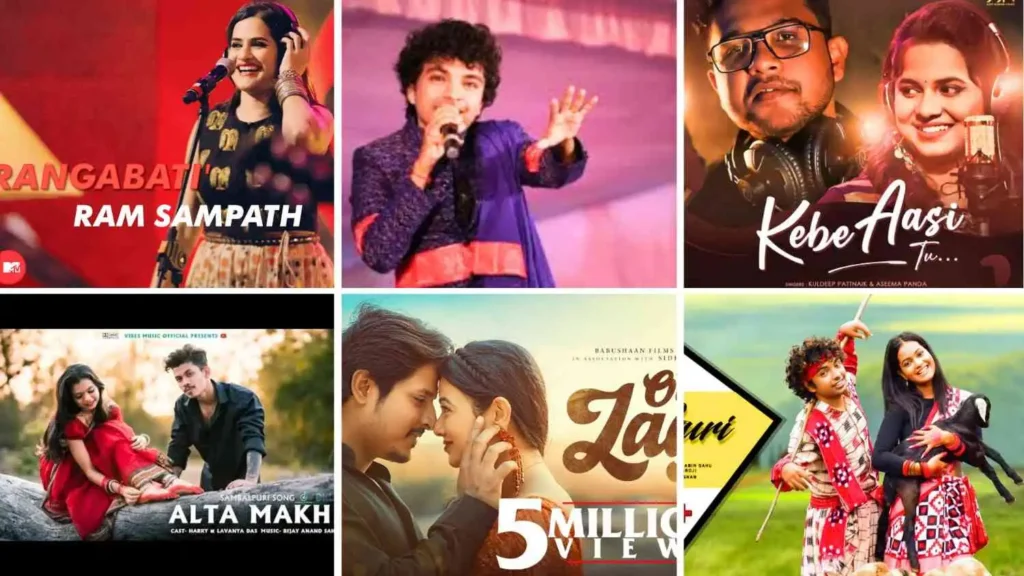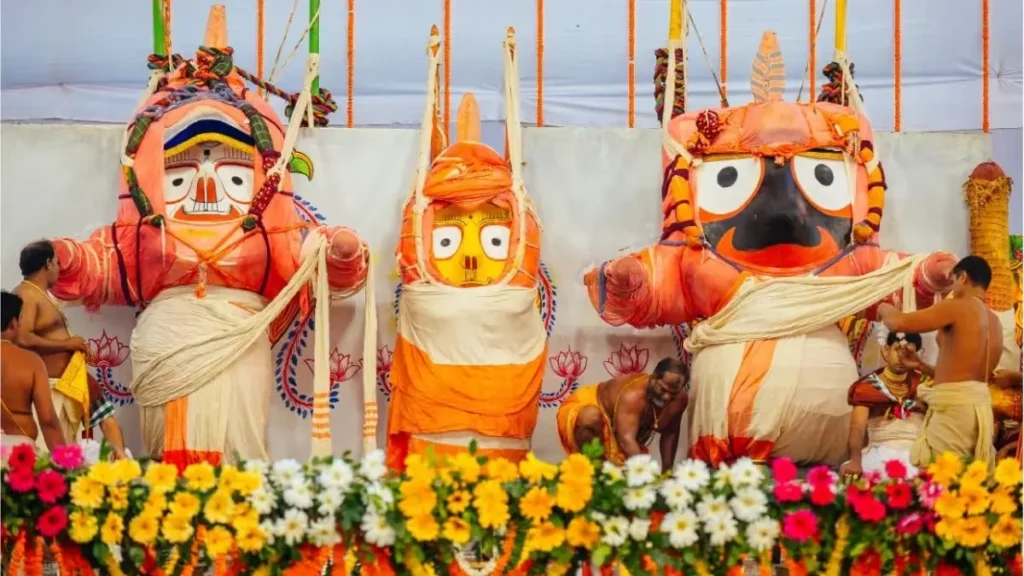
Table of Contents
It starts with a beat. Then a voice—raw, rhythmic, and rooted in the soil of Sambalpur. Before you know it, you’re tapping your feet, clapping your hands, and humming along. That’s the power of the new Sambalpuri song—a musical wave that’s not only gaining momentum across Odisha but is making its mark in digital India.
To begin with, in this blog, we explore how Sambalpuri songs have evolved from traditional folk ballads to viral hits in 2025. Furthermore, we look at their cultural significance, highlight emerging artists, and explain how they continue to tell stories of love, labor, festivals, and the forests.
What Is a Sambalpuri Song?
A Sambalpuri song is more than just music—it’s a way of life. Born in western Odisha, especially the districts of Sambalpur, Bargarh, and Balangir, these songs are closely tied to the region’s agricultural rhythms, tribal customs, and folk spirituality.
Traditionally sung during festivals like Nuakhai, Karma, or Sital Sasthi, Sambalpuri songs were originally oral compositions passed from generation to generation. These songs were performed by villagers—not for fame, but for community bonding and spiritual celebration.
Fast forward to 2025, and we see auto-tuned beats blending with traditional instruments, rural dialects fused with urban rap, and dance videos going viral across social media.
A Brief Look at the Journey (2019–2025)
Back in 2019, Sambalpuri songs largely remained within regional radio stations and local YouTube channels. Gradually, however, with improved internet access and affordable smartphones, many grassroots singers began uploading music independently. Consequently, over the next few years, some of these songs rapidly gained traction and eventually exploded in popularity beyond Odisha’s borders.
From “Rangabati” covers to the remix versions of “Phula Gendu”, the timeline from 2019 to 2025 has seen:
- Fusion tracks that combine tribal beats with EDM
- Collaborations with Bollywood playback singers
- Socially conscious lyrics that tackle love, migration, and rural pride
Top Artists Behind the New Sambalpuri Song Revolution
Several artists are fueling this movement by modernizing folk content without losing its roots.
- Mantu Chhuria: A youth icon, known for energetic delivery and relatable themes
- Sabyasachi Panda: A folk purist whose lyrics speak directly to rural life
- Jyoti Meher: One of the leading female voices in the genre, celebrated for emotional ballads
- Pankaj Jal: Often credited for blending Sambalpuri with modern pop
Instruments and Style: Sound of the Soil
The new Sambalpuri song may sound contemporary, but its musical DNA remains tribal and rustic. Instruments include:
- Dhol: Earthy base percussion
- Nishan: Loud ceremonial drum
- Tasha: Small, sharp beat enhancer
- Mahuri: Wind instrument similar to a shehnai
- Synthesizers
- Trap beats
- Bass drops
Themes That Still Resonate
Even with the latest tech updates, Sambalpuri songs still consistently dwell on familiar and deeply human themes. In particular, they include:
- Love and longing: Notably, these romantic tracks reflect rural courtship traditions
- Seasonal celebrations: For instance, festivals like Nuakhai, Holi, and Raja take center stage
- Social commentary: Moreover, they address issues such as migration, caste, and gender roles
- Spiritual devotion: Furthermore, the songs pay homage to deities like Samaleswari and Jagannath
Digital Platforms & the Rise of 2025’s Sambalpuri Hits
With the rise of platforms like YouTube, Instagram Reels, and Moj, Sambalpuri music quickly gained a stage without borders. As a result, artists now release the new Sambalpuri song of 2025 as vibrant music videos that feature catchy choreography, dramatic visuals, and modern-day storytelling.
Notably, digital trends reflect this evolution. In particular, they include:
- Dance Challenges that highlight rural backdrops
- Remix Reels that creatively reinterpret old folk hits
- Mashups that blend Sambalpuri tunes with Bhojpuri or Punjabi beats
FAQs About Sambalpuri Songs
1. What is the difference between a traditional and new Sambalpuri song?
Traditional Sambalpuri songs are sung during rituals and festivals with native instruments. New Sambalpuri songs are adapted for modern audiences using digital production and video storytelling.
2. Who are the top Sambalpuri song artists today?
Over the years, artists like Mantu Chhuria, Jyoti Meher, and Pankaj Jal have consistently gained fame. In particular, they embrace a fusion approach and produce viral hits, thereby expanding Sambalpuri music’s reach.
3. Are Sambalpuri songs only in Odia?
Although rooted primarily in Kosali and Odia dialects, many songs now intentionally include Hindi, English, and Bhojpuri elements to actively appeal to wider audiences.
4. Where can I listen to new Sambalpuri songs?
You can find them on platforms like YouTube, Spotify, Gaana, Moj, and Instagram Reels.
5. Do Sambalpuri songs have social or cultural value?
Indeed, they vividly reflect village life, identity, and emotional expression, thereby making them culturally significant even when artists update them with modern flair.
Why the New Sambalpuri Song Movement Matters
represents a grassroots cultural resurgence. It empowers local artists, preserves dialects, and invites younger generations to connect with their heritage.
Moreover, these songs are vehicles for empathy and education—giving outsiders a peek into the heart of western Odisha.
Don’t Just Listen—Celebrate It!
Whether you’re from Odisha or simply a lover of regional music, there’s no denying the timeless charm of the new Sambalpuri song. Indeed, it sounds bold, feels beautiful, and flows seamlessly to the rhythm of both the past and the present.
Your call to action:
- First, subscribe to a Sambalpuri artist’s channel
- Next, join a dance challenge or create a reel
- Then, learn about its folk origins from local literature
- Finally, sing it proudly, knowing it carries centuries of tradition
The new Sambalpuri song isn’t just trending—it’s thriving. And through every beat and verse, it tells us the same truth: culture lives on, as long as we sing it forward.


Pingback: Mahari Dance of Odisha – Origin, and Legacy of Puri’s Devadasis